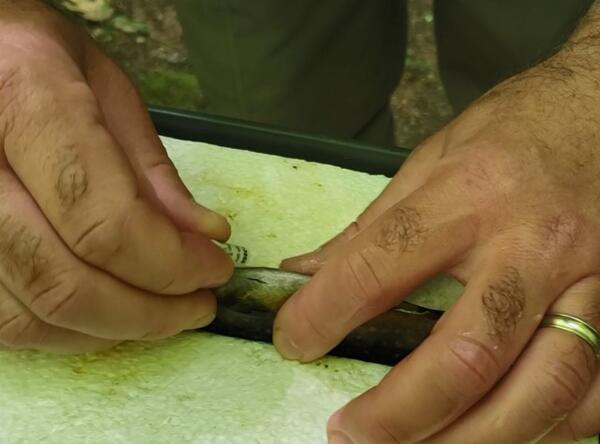Temperature recording tag being surgically implanted into brook trout
Temperature recording tag being surgically implanted into brook troutAnthropogenic factors coupled with increased stochastic weather events (e.g., flood and drought) has caused stream temperatures to increase. Due largely to increased stream temperature, brook trout currently occupy only 70% of their historical distribution and regional models predict further range contraction as stream temperatures continue to increase.



